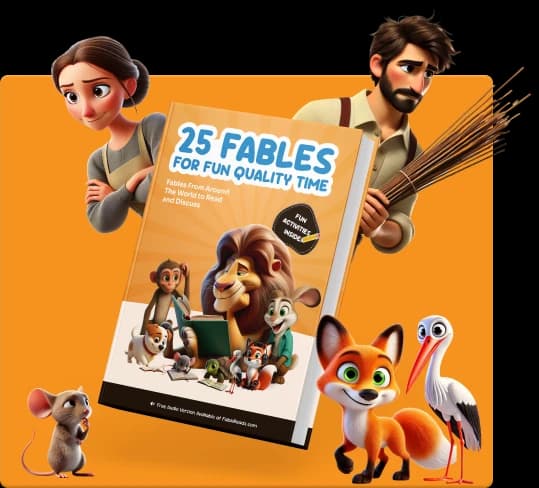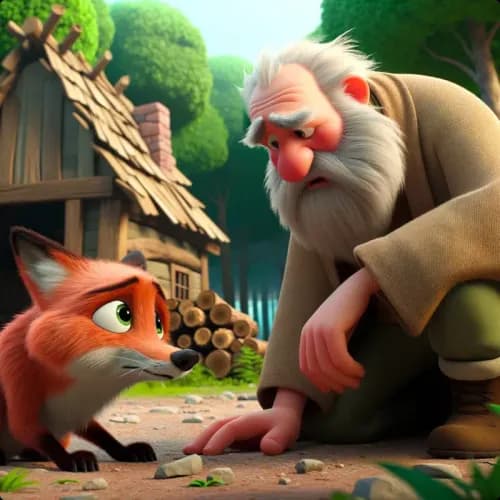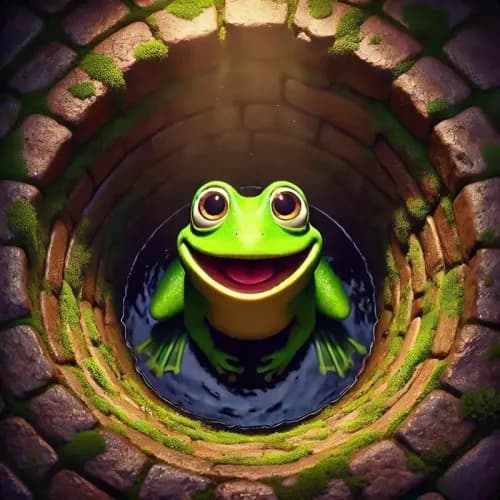Aesop | Greece
Der Hund und der Wolf
Ein Wolf überlegt, ob er das Angebot eines Hundes für ein bequemes Leben annimmt, entscheidet sich aber für die Freiheit.

Eines sonnigen Tages spazierte ein hungriger Wolf durch die Landschaft und suchte nach etwas zu essen. In der Nähe eines Dorfes sah er einen Hund, der sehr gesund und glücklich aussah. Der Wolf wurde ein wenig neidisch und fragte den Hund, warum er so gut aussah.
Der Hund sagte: "Ich lebe bei Menschen, die mir Futter und einen Platz zum Schlafen geben. Im Gegenzug beschütze ich ihr Haus."
Der Wolf fand, dass das nach einem großartigen Leben klang und sagte: "Vielleicht könnte ich bei dir leben und auch so ein ruhiges Leben führen?"
Der Hund antwortete: "Klar, komm mit mir, ich stelle dich meinem Besitzer vor."
Als sie zusammen gingen, bemerkte der Wolf Spuren um den Hals des Hundes. Er fragte: "Was ist das an deinem Hals?"
Der Hund erklärte: "Das kommt von meinem Halsband. Mein Besitzer bindet mich tagsüber an und lässt mich nachts los, um das Haus zu bewachen."
Der Wolf blieb stehen und dachte nach. "Also kannst du nicht hingehen, wohin du willst?"
Der Hund nickte: "Ja, aber ich bekomme Futter und einen warmen Schlafplatz."
Nachdem er darüber nachgedacht hatte, entschied der Wolf: "Danke für das Angebot, aber ich möchte nicht so leben. Ich bin lieber frei und finde mein eigenes Futter, als gut genährt zu sein, aber nicht frei."
Mit diesen Worten drehte sich der Wolf um und rannte zurück in den Wald.
Kaufen Sie ein Buch und helfen Sie dabei, Fabeln in die Welt zu bringen
Genießen Sie 25 ausgewählte Fabeln fürs Leben, gedruckt. Jeder Kauf unterstützt kostenlose Geschichten für Kinder, Eltern und Lehrer weltweit auf fablereads.com

















